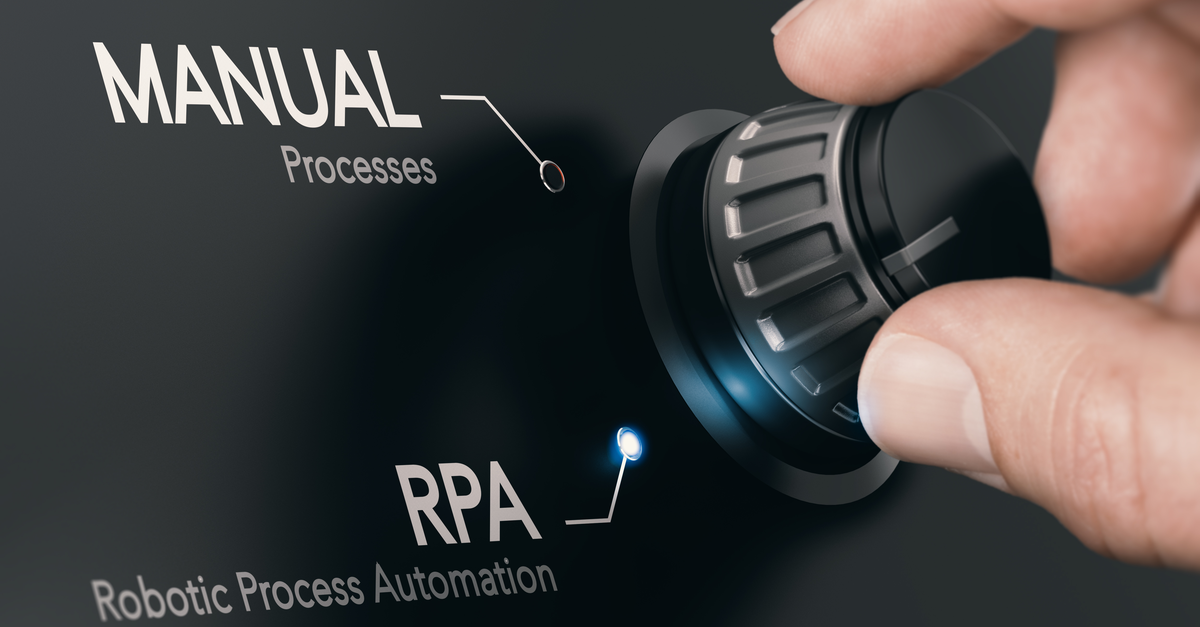- About Us
- Services
- Industries
- Resources
- Careers
- Contact

Over the last 15 years, advances in Robotic Process Automation (RPA) have disrupted industries across the business spectrum, revolutionizing organizational processes in verticals from the financial to now the retail sector.
It's estimated that by 2024, there will be a near 60% growth in the use of RPA, resulting in an $8.75 billion marketplace.
The potential impact of RPA on global labor costs is staggering. A 2017 study by PwC estimated that 45 percent of work tasks could be automated by RPA, resulting in a $2 trillion savings in worldwide workforce expenditures.
Understanding the basics of software bots and RPA software can be confusing without proper definition. Terms like "bots," "artificial intelligence (AI)," and "machine learning (ML)," it's no wonder many business owners tune out. The fact of the matter is that it's far simpler to understand than the names imply.
Gartner's RPA software definition demystifies most of this process:
RPA is a productivity tool (sold as licensed software) that allows a user to configure one or more scripts (which some vendors refer to as "bots") to activate specific keystrokes in an automated fashion. The result is that the bots can be used to mimic or emulate selected tasks (transaction steps) within an overall business or IT process.
These processes include manipulating data, passing data to and from different applications, triggering responses, or executing transactions. RPA uses a combination of user interface (UI) interaction and descriptor technologies. The scripts can overlay on one or more software applications.
We often view AI through the lens of science-fiction, as the concept of robots taking over the world and leaving us humans in the dust. However, in the business world, AI through RPA is not intended to replace living, breathing employees. In fact, handing off your most tedious duties to an automated system gives workers more time and space to do the things only people can do for your business.
Advances in RPA not only modernize and simplify your operations, but they have also become necessary to stay competitive in the web-savvy business world. It allows you to stay one step ahead of your competitors and put yourself in a position to handle an unpredictable marketplace.
Valuable data is often scattered throughout internal channels and across the web, and RPA lets you gather and consolidate this information to make better, more productive decisions for your business.
While one of RPA's technology benefits is its ease of deployment, which can be instituted on a user-by-user basis, analysts believe that it is on the cusp of changing enterprise-level business practices.
"RPA is poised to become a widespread enterprise technology, making automation part of the core business process rather than a one-off solution to fix problems on a limited scale," according to PwC.
That's why it's critical that organizations devise a detailed strategy for the integration of RPA and its impact across the business, then carry out a systematic maintenance program once they have the technology in place.
While this takes a skilled development team with specialists known as data scientists to create the software, once they complete the basic framework, the process of modification for a customized need is straightforward.
RPA is no silver bullet and is only as effective as the efficient and thorough planning of the discovery and automation flow configuration.
The key to integrating RPA is to start slowly, using targeted applications developed in collaboration with an experienced RPA affiliate.
From there, you can successfully apply RPA in numerous areas. We encourage you to learn more about RPA and how Solugenix can be your ideal support partner.
Solugenix
Technology & Process for Growth
601 Valencia Ave, Suite 260
Brea, CA 92823
Call us: 1-866-749-7658